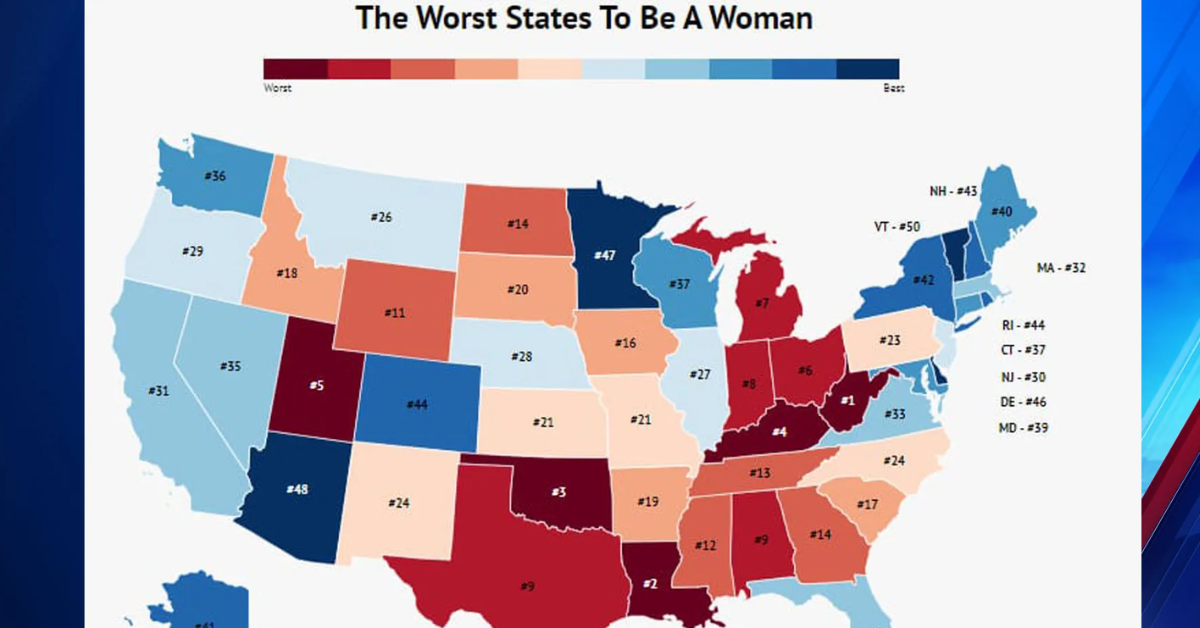Shocking Stats: Indiana Among Worst States for Women’s Equality in Latest Study!
Indiana has been ranked among the worst states for women’s equality. Although significant progress has been made in women’s rights in the United States since the 19th Amendment was passed, there is still a long way to go. Many women continue to face unequal treatment, especially in the workplace and in leadership roles.
The study found that Indiana is ranked 41st out of all 50 states for women’s equality, making it the 10th worst state overall. This low ranking reflects ongoing challenges in various aspects of gender equality. For example, Indiana’s workplace environment for women is rated 40th, and its political empowerment for women is rated 38th. However, the state performs slightly better in education and health, where it is ranked 22nd.
In comparison, neighboring states are faring somewhat better. Kentucky is ranked 21st overall for women’s equality, with its strongest performance in education and health (3rd place), though it falls behind in political empowerment (44th place).
Illinois is also doing better than Indiana, coming in 19th overall. Illinois excels in political empowerment (12th place) but has lower scores in the workplace environment (29th place) and education and health (30th place).
WalletHub’s study evaluated all 50 states based on 17 key indicators of gender equality. These indicators include the representation of women in executive positions, the unemployment rate disparity between men and women, and other measures of gender equality. Despite the progress made in recent years, the results show that there are still significant gaps in gender equality, especially in states like Indiana.
This ranking highlights the need for continued efforts to improve women’s rights and opportunities. States with lower rankings, like Indiana, face challenges in providing equal opportunities and representation for women, reflecting broader issues that still need to be addressed at both state and national levels.

